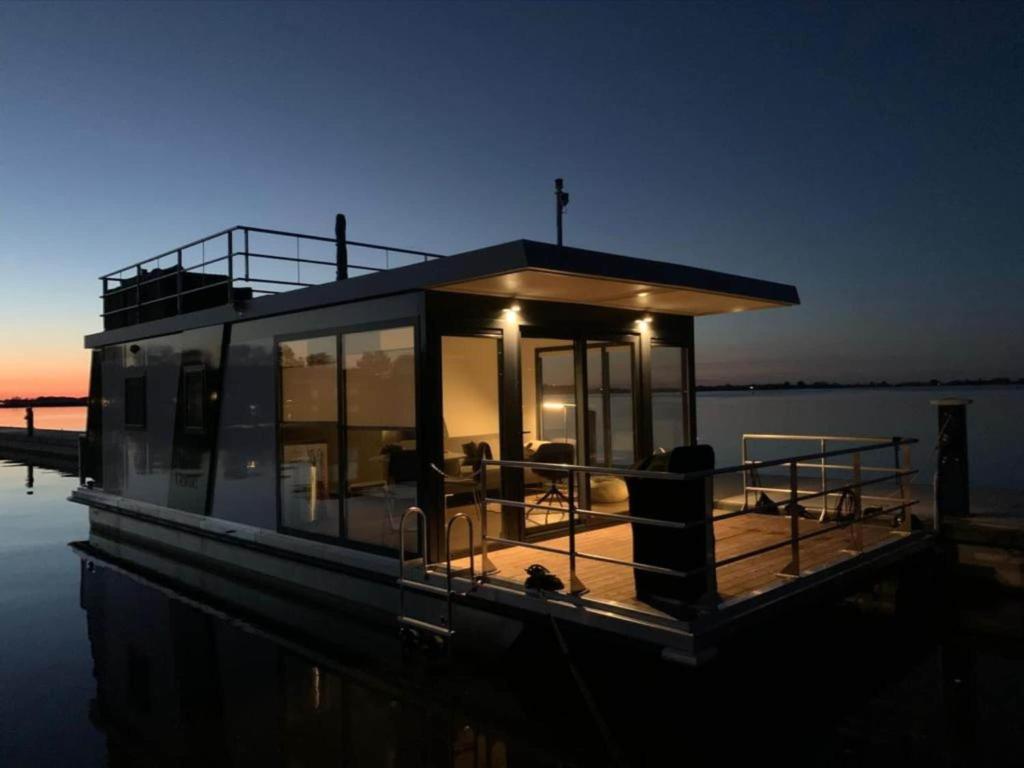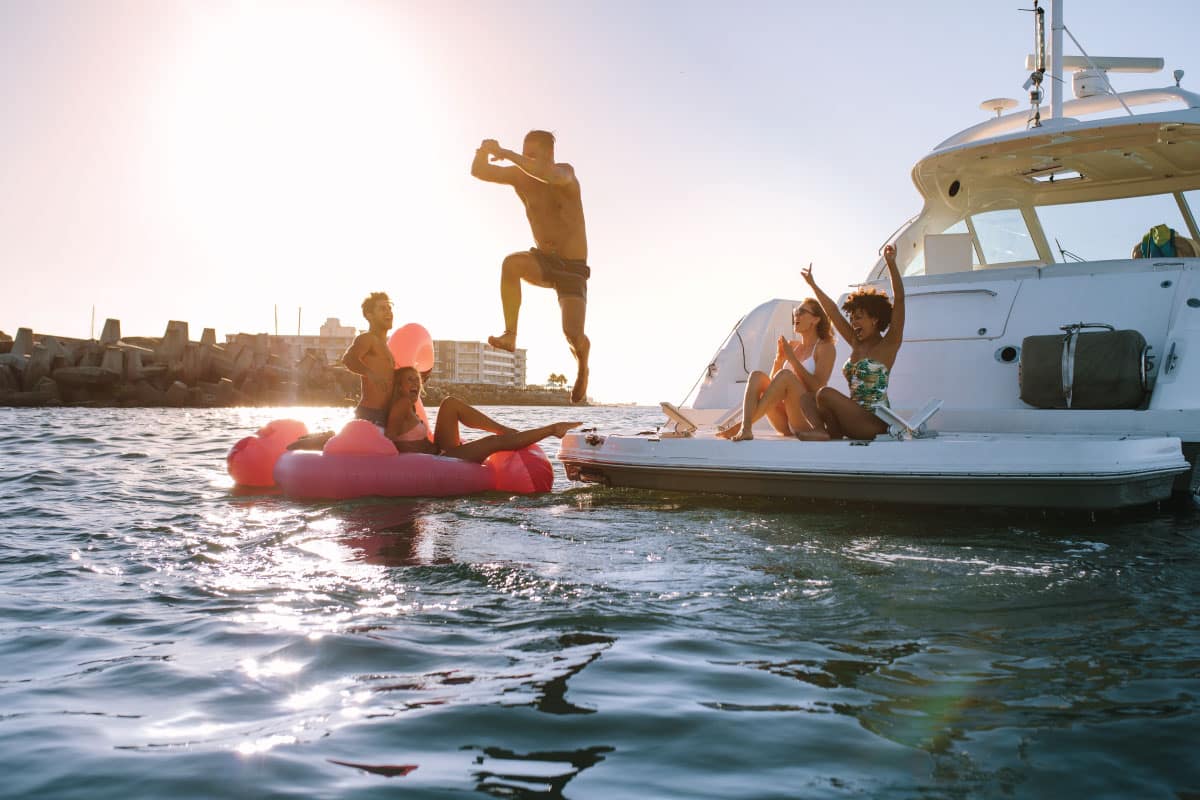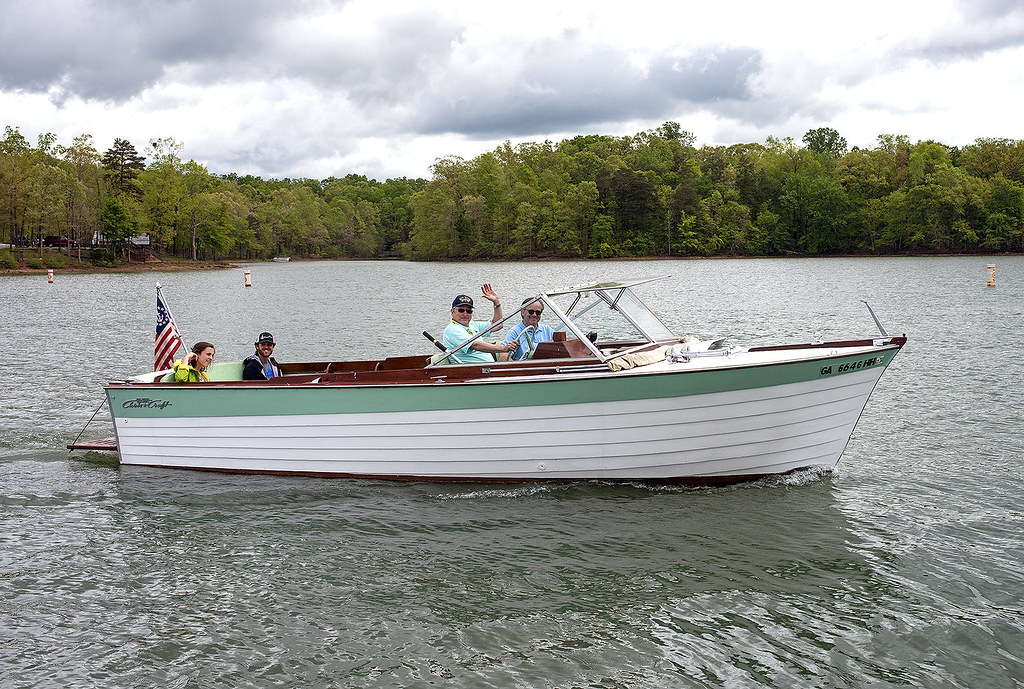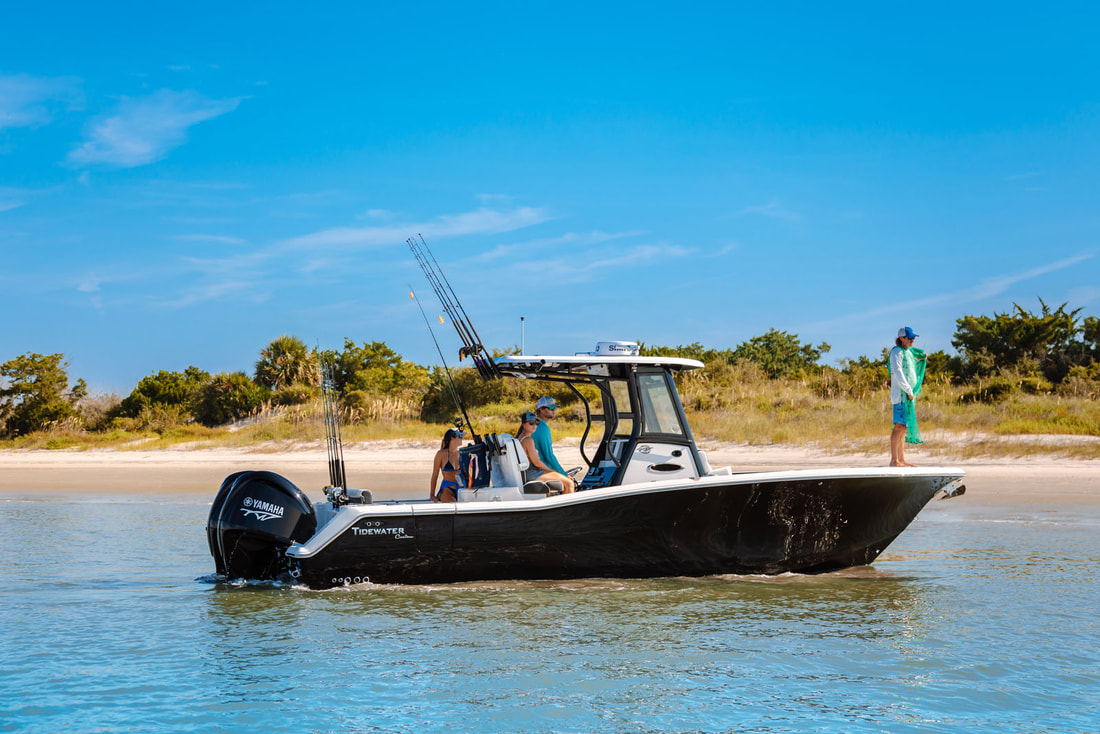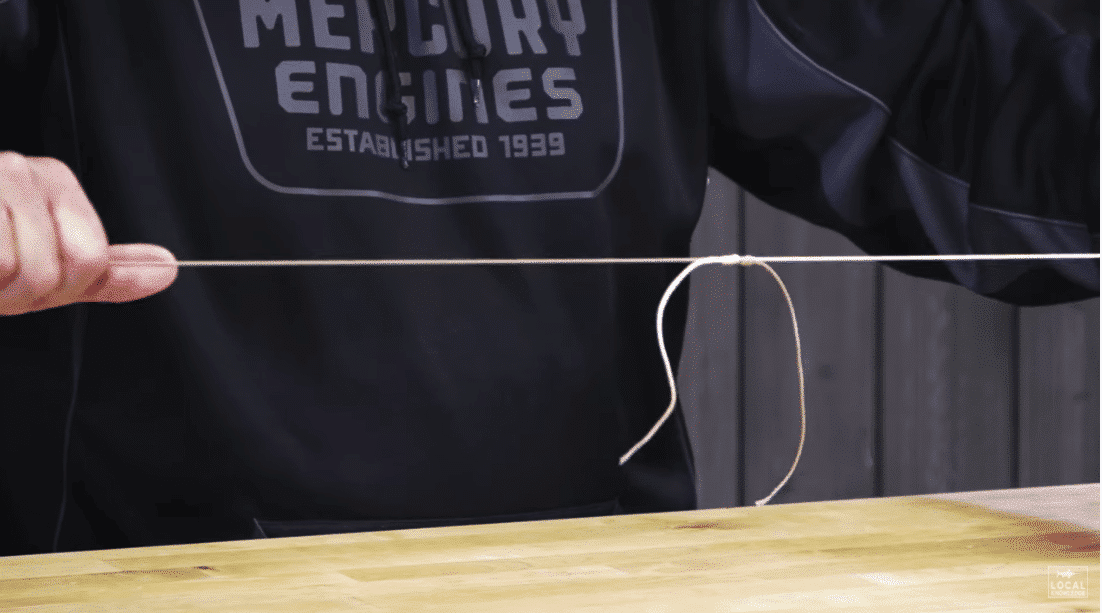Seakeeper: Revolutionizing Boat Stability and Comfort
Seakeeper is a leading company in the field of marine motion control technology, providing gyroscopic stabilizers and vessel attitude control systems for boats of all sizes.
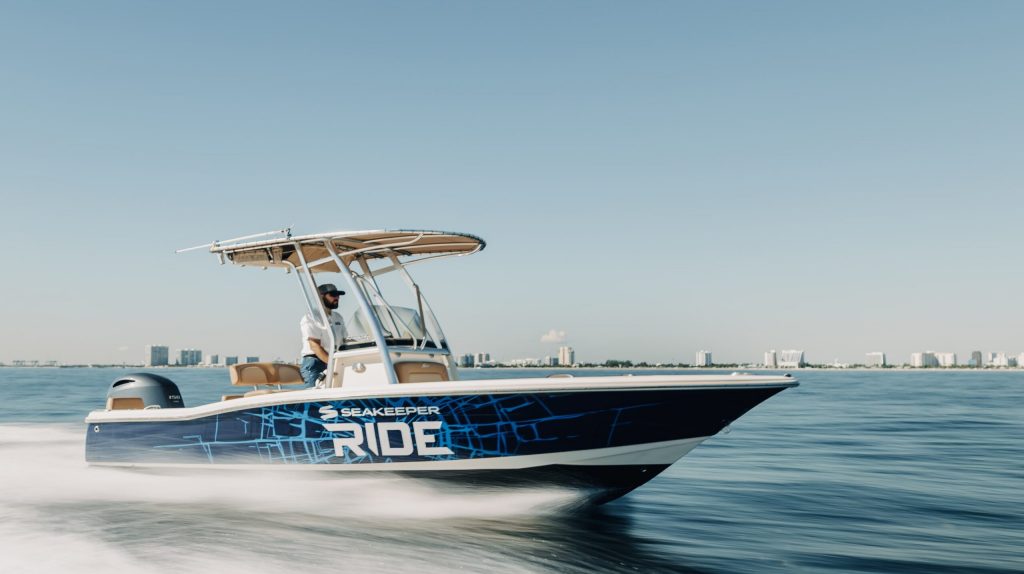
With the primary goal of enhancing comfort and safety on the water, Seakeeper offers advanced solutions that significantly reduce boat roll and pitch. These solutions ensure a smooth, stable ride when at rest and underway.
The technology behind Seakeeper stabilizers relies on a vacuum-encapsulated flywheel spinning at high speeds within a gyroscopic housing that counters boat roll.

Seakeeper's range of models cater to diverse requirements, from small recreational boats to larger commercial vessels, providing optimal stabilization and control for an improved on-water experience. As a result, Seakeeper has become a popular choice among the boating community.
Key Takeaways
- Seakeeper's gyroscopic stabilizers enhance boating comfort and safety by reducing roll and pitch
- A variety of models cater to diverse boat sizes, from small recreational boats to larger commercial vessels
- The advanced technology behind Seakeeper stabilizers ensures a smooth and stable ride in various marine environments
Understanding Seakeeper Technology
Fundamentals of Gyro Stabilization
Seakeeper technology utilizes gyro stabilizers to reduce boat roll and improve overall stability. The concept behind this technology is based on the principles of gyroscopic physics.
The device generates anti-rolling torque by using a flywheel spinning at high speeds, creating angular momentum. When the vessel experiences roll, the gyro stabilizer tilts fore and aft, generating a counteracting force to reduce the motion.
Seakeeper's active control system plays a crucial role in optimizing the gyro stabilizer's performance. This smart technology is an integral part of the vessel attitude control system, which monitors sea conditions and adjusts the stabilizer to match the changing environment.
As a result, the system can maintain optimal performance across varying sea conditions and speeds.
Furthermore, Seakeeper's vacuum encapsulation contributes to its efficient operation. This encapsulation allows the flywheel to spin up to three times faster, substantially reducing its weight and lowering power consumption. It also helps protect the flywheel and other critical components from external factors.
Seakeeper Models and Specifications
Seakeeper offers a wide range of gyro stabilizer models suitable for various boat sizes and usage requirements. The specifications differ between models to cater to different vessel needs. Key parameters to consider include:
- Spool-up time: The duration it takes for the gyro stabilizer to reach optimal operating speeds.
- Noise output: Acoustic emissions generated during gyro stabilizer operation.
- Power consumption: Energy required by the system during operation.
- Flywheel weight: Mass of the flywheel, which varies depending on the specific Seakeeper model.
Here is a summary of some Seakeeper models along with key specifications:
| Model | Boat Size Range | Spool-up Time | Noise Output* | Power Consumption | Flywheel Weight |
|---|---|---|---|---|---|
| Seakeeper 2 | 27 - 32 ft | 15 minutes | 62 dB | 1.6 kW | 56 lbs |
| Seakeeper 6 | 42 - 52 ft | 30 minutes | 64 dB | 2.8 kW | 230 lbs |
| Seakeeper 9 | 50 - 60 ft | 35 minutes | 65 dB | 3.0 kW | 285 lbs |
* Noise output measured at 6 feet
By understanding the fundamentals of gyro stabilization and selecting the appropriate Seakeeper model, boat owners can significantly enhance their vessel's stability, comfort, and performance.
With Seakeeper technology, boating experiences become more enjoyable and safer in varied sea conditions.
Benefits of Seakeeper
Stabilization Performance
Seakeeper is a revolutionary stabilization system designed to eliminate up to 95% of boat roll, providing unparalleled stability even in rough seas. The system comprises a gyro stabilizer that significantly reduces the roll, pitch and yaw of a boat, improving overall performance and comfort.
Key Performance Factors:
- Roll Reduction: Seakeeper can eliminate up to 95% of boat roll, ensuring a smooth, stable platform.
- Sea State Adaptability: The system functions efficiently in various sea states, from calm waters to choppy conditions.
- Speed Compatibility: Seakeeper works effectively both at anchor and underway, enhancing stability across a wide range of boat speeds.
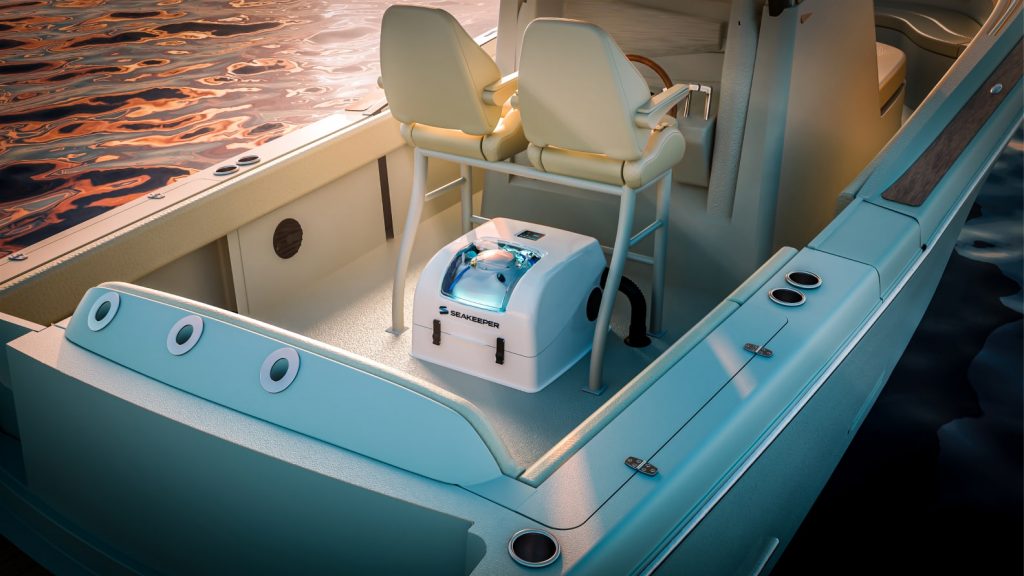
Enhanced Boating Experience
A boat equipped with a Seakeeper stabilizer offers several benefits that improve the overall boating experience. The system's impressive stabilization performance leads to numerous advantages, including:
- Reduced Seasickness: By minimizing boat roll, Seakeeper can decrease seasickness among passengers, making for a more enjoyable journey.
- Increased Comfort: Seakeeper's stabilization allows for a smoother ride, enhancing onboard comfort and relaxation.
- Improved Functionality: The stable platform provided by Seakeeper makes various activities like fishing, watersports, and leisure more manageable and enjoyable.
- Safety Enhancement: Seakeeper's ability to reduce boat roll results in a safer environment for crew and passengers, minimizing the risk of accidents and injuries.
Seakeeper Models Overview
Seakeeper offers a diverse variety of gyroscopic boat roll stabilizers to cater to different boat sizes and weights. This overview will provide you with more insight into the various products, categorized under Compact Range for Smaller Vessels and Advanced Range for Larger Vessels.
Compact Range for Smaller Vessels
The Compact Range by Seakeeper includes the following gyroscopic stabilizers:
- Seakeeper 1: Designed for boats 23' to 30' in length and up to 5.5 tons in weight ^1^
- Seakeeper 2: Suitable for boats ranging from 31' to 39' in length^2^
- Seakeeper 3: Engineered for boats in the 30' to 39' range^2^
Stabilizers in this range are designed to provide superior stabilization performance in a compact form, enabling users with smaller vessels to enjoy a smooth and comfortable boating experience.
Advanced Range for Larger Vessels
Seakeeper's Advanced Range is tailored for higher-capacity boats:
- Seakeeper 18: Designed for boats in the 65' to 74' range and up to 56 tons in weight^2^
- Seakeeper 26: Suitable for boats from 75' to 84' in length and up to 97 tons in weight^2^
Apart from these models, Seakeeper also offers the Seakeeper 10.5, ideal for boats 50' to 59' in length^2^, and the Seakeeper 40 for vessels 85' to 110' and up to 115 tons^1^.
This range delivers advanced stabilization technology for larger vessels, ensuring a comfortable and seasickness-free experience for those on board.
Installation Process
Preparation and Planning
Before the installation of a Seakeeper system, proper planning and preparation are necessary to ensure a smooth process. This involves evaluating your vessel's structure and determining the optimal location for the Seakeeper unit.
Each vessel may use different methods for affixing the system, such as longitudinal beam bolt-in or transverse beam bolt-in installations. It's important to consider load distribution, structural reinforcement, and service access during the planning stage.
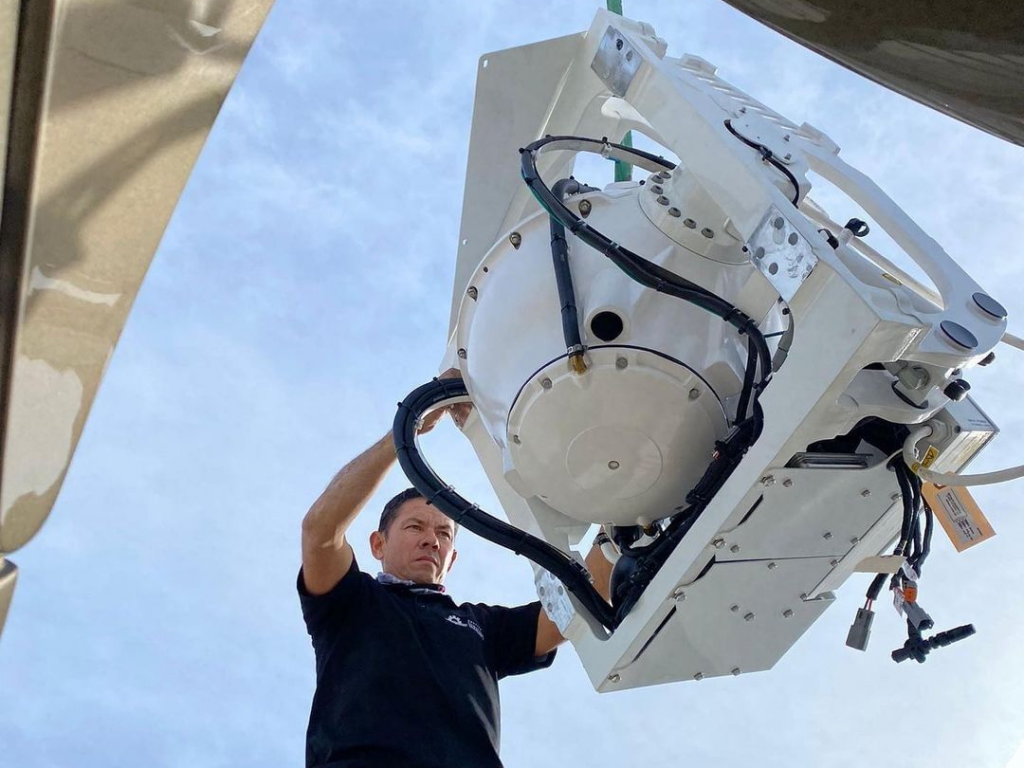
Professional Installation
A Seakeeper installation should be performed by a certified Seakeeper installation & service center, like the Starboard Yacht Group or a Seakeeper dealer. These professionals are trained to handle all the critical components of the Seakeeper system.
They will also handle electrical and hydraulic connections and set up the system's control panel.
Here are some key steps in the Seakeeper installation process:
- Installing the Seakeeper foundation and attaching the unit to the vessel's structure
- Connecting electrical and hydraulic systems to the Seakeeper unit, ensuring proper wiring, and providing a dedicated power source
- Setting up and commissioning the control panel for the Seakeeper system
- Testing the system and ensuring proper operation
Post-Installation Verification
Once a professional service center or dealer has completed the Seakeeper installation, it's crucial to verify the system's operation, both during sea trials and at the dock. The certified installer should confirm that all connections are secure, the Seakeeper unit operates as intended, and the vessel's structure can handle the load generated by the Seakeeper system.
Additionally, a review of the post-installation documentation, including manuals and maintenance schedules, will provide valuable information for long-term care of the Seakeeper unit.
Operational Guidance
Dashboard Interaction
The Seakeeper system is equipped with a user-friendly dash display that allows users to monitor and control the stabilization process seamlessly. The dash display is usually mounted at the primary helm station, providing access to vital performance data such as:
- System status
- Operational mode
- Alarms and alerts
The Seakeeper ride can be customized according to users' preferences, thanks to the smart technology embedded in the system. The user can efficiently start, operate, monitor, and shut down the Seakeeper using the dash display and its intuitive interface.
Maintenance Requirements
To ensure the enduring performance of a Seakeeper system, adhering to proper maintenance procedures is crucial. The Seakeeper Owner's Guide contains comprehensive information on basic operation and maintenance guidelines that every Seakeeper owner should follow.
Some essential maintenance tasks include:
- Regularly inspecting the Seakeeper for any wear and tear
- Checking and replacing consumable components as required (e.g., seals, cooling system components, etc.)
- Cleaning the Seakeeper unit and surrounding areas to ensure optimal performance
For further guidance on maintaining their Seakeeper system, owners can consult the detailed operation manual provided by the manufacturer. This manual covers specific maintenance intervals and procedures to guarantee the system's efficiency and longevity.
Ownership and Support
Warranty Information
Seakeeper provides a comprehensive two-year/2,000-hour full system warranty for recreational applications, ensuring peace of mind for their customers. The warranty covers a wide range of issues and malfunctions, and customers also have the option to purchase an extended warranty for added protection.
Customer Service and Support
The company is committed to offering top-notch customer service and support. They provide a dedicated Ownership Support website to assist with any questions or concerns about their products. This site includes information on factory warranty, exclusive sales, customer reviews, and how to locate a Seakeeper service provider.
Boat owners can also visit the Seakeeper Manuals website to access detailed documentation on their products. Furthermore, customers who require assistance with their Seakeeper Ride system can visit the Support Center for guidance on product registration, warranty claim submission, and the latest software updates.
Advancements and Innovations
Latest Product Updates
Seakeeper has been consistently expanding its range of products to cater to various boat sizes and weights. For instance, they have introduced the Seakeeper 5, 9, 16, 26, and 35, which significantly enhance boat stabilization for boats 30 feet and larger 1. The Seakeeper 5 is specifically designed for boats up to 20 tons, or about 30-50 feet 1.
Meanwhile, the Seakeeper 1 is suitable for boats between 23 and 30 feet, and up to 5.5 tons 2.
Furthermore, the company has also developed the Seakeeper 10.5 and 14, equipped with the latest engineering advancements for optimal stabilization 3. These models join the Seakeeper 4, Seakeeper 4.5, and Seakeeper 40 to provide the most stabilization in the smallest, lightest, and most power-efficient designs 3.
Future Developments
As a forward-looking company, Seakeeper continuously affirms its commitment to innovation by regularly updating its products to meet the individual strengths and weaknesses of specific boats. One can expect the company to constantly work towards developing new products that further enhance vessel stability and user satisfaction.
To stay abreast of all the latest updates and new product announcements, interested individuals can subscribe for updates from Seakeeper through their website or follow the company on social media channels. In addition, Seakeeper often participates in events where they showcase their latest technology and allow potential users to experience the benefits of their products firsthand.
Footnotes
- https://www.seakeeper.com/press-releases/seakeeper-affirms-commitment-to-innovation-with-new-gyros/ ↩ ↩2
- https://www.aquamaremarine.com/en-us/blogs/news/how-seakeepers-work ↩
- https://insidemarine.com/seakeeper-unveils-two-breakthrough-products/ ↩ ↩2
Purchasing Options
When considering a Seakeeper for your boat, there are various purchasing options to explore. In this section, we'll discuss retail channels and exclusive offers.
Retail Channels
Seakeeper products can be purchased directly from a manufacturer or an authorized dealer. For instance, the Seakeeper Ride 450 can be found on their official website. This model is specifically designed for boats up to 26 ft, providing stable navigation with its 450 mm (~18 in.) blade size and a power draw of 12V 7-8A at cruising speed.
Boat manufacturers may also offer Seakeeper products as standard equipment or a factory option on new models, such as the Boston Whaler Dauntless 200. In this case, it's essential to consult with your boat manufacturer for accurate quotes and purchasing details.
Exclusive Offers
When looking for the best price on a Seakeeper, it's a good idea to keep an eye out for exclusive sales events and promotions. These may be available through manufacturers, dealers, or online retailers.
For example, Tri Sea Stabilizers provides a Seakeeper price list and installation cost guide, presenting a useful starting point for budgeting your purchase. It is also worth checking for discounted pricing on older or discontinued models, which can sometimes be found on clearance or closeout sales.
To stay updated on exclusive offers, make sure to sign up for newsletters from your preferred manufacturer or dealer. Also, enable notifications for cookies on their website, so you don't miss any time-sensitive deals.
User Engagement
Seakeeper aims to increase user engagement through a variety of strategies and initiatives. They focus on involving the community and offering valuable subscription services. By fostering a strong community and providing tailored services, Seakeeper is able to promote user loyalty and improve the overall experience for all stakeholders.
Community and Events
Seakeeper understands the importance of community involvement and actively participates in various events to strengthen its ties with boat builders, owners, and leading Seakeeper service providers in the industry. One such example is their presence in Fort Lauderdale, where boating events and trade shows form a significant part of the community.
In these events, Seakeeper showcases its recreational line of marine gyro stabilizers, demonstrates its unique technology, and offers a platform for users to exchange ideas and share experiences. By encouraging active participation, the company builds trust with customers, while promoting a sense of camaraderie among Seakeeper users.
Furthermore, Seakeeper organizes training sessions and workshops to educate boat owners and service providers on proper installation and maintenance of their products, ultimately ensuring better customer satisfaction.
Subscription Services
To enhance user engagement and keep its customers updated, Seakeeper offers subscription services that provide valuable information and updates about the latest products, innovations, and market trends.
Users are encouraged to subscribe for updates through the company website, enabling them to stay informed about new product offerings, special promotions, and upcoming events.
Subscription services also include technical support from Seakeeper's team of experts, ensuring users have access to the assistance they may need to optimize the performance of their stabilizers.
Market Presence
Brand Visibility
Seakeeper has a strong market presence, with their gyrostabilizers being well-known for their efficient cooling system and exceptional fit and finish. This can be attributed to the company's consistent focus on research, development, and innovation.
Their product line includes intuitive rotary blade ride controllers that work seamlessly with their gyrostabilizers, offering impressive stability on water.
Their efforts in continually improving existing technology have contributed significantly to their brand visibility. They are committed to exploring the latest techniques in marine stabilization, consistently incorporating cutting-edge technology such as vacuum-enabled gyroscopic machinery and advanced motion control systems.
Customer Loyalty
Seakeeper is known for their quality products and excellent support system, which has led to a loyal customer base. The company takes pride in their strong relationships with boat builders, maritime industry stakeholders, and customers across the globe.
Their expansions into key markets such as Europe have been made possible through their dedication to providing top-notch service.
A few factors that have contributed to Seakeeper's customer loyalty include:
- Product Performance: Seakeeper's gyrostabilizers deliver remarkable stability and comfort, even in challenging sea conditions. The powerful rotary blades and advanced technology employed by the company enable the reduction of boat roll, thereby minimizing seasickness.
- Quality: Seakeeper adheres to strict quality standards, ensuring that their products are built to last. Their equipment showcases impressive fit and finish, making them a preferred choice among customers who are particular about long-lasting and reliable solutions.
- Customer Support: Seakeeper has a global sales and support network, ensuring that they are always available to address customer concerns. This comprehensive support system has fostered a sense of trust among clients, who know they can rely on the company in times of need.
Technical Specifications
Power Requirements
The Seakeeper uses a variety of power sources, including 12V for some of its smaller models. The amount of power drawn by these stabilizers depends on the specific model and its requirements.
In general, the power consumption of a Seakeeper stabilizer is reasonable considering its functionality and benefits, while minimizing the impact on your vessel's power resources.
Physical Dimensions
Seakeeper gyro stabilizers come in various sizes to suit different types of boats, from smaller vessels to larger yachts. Here are some key specifications of a notable Seakeeper model, the Seakeeper 3:
- Dimensions: 26.8 L x 27.0 W x 23.3 H (inches) or 0.680 L x 0.685 W x 0.592 H (meters)
- Max Rated Speed: 8,450 RPM
- Angular Momentum at Max Rated RPM: 3,000 N-M-S
- Max Anti-Rolling Torque at Max Rated RPM: 7,854 N-M
- Spool-up Time to Max Rated RPM: 50 minutes (8,450 RPM)
- Spool-up Time to Stabilization: 36 minutes (7,185 RPM)
- Noise Output: <72 dBC at 1 meter
A seawater pump is used to cool the system as needed. The power consumption of the seawater pump depends on the specific Seakeeper model, but it typically has minimal effects on the vessel's overall power usage.
Recreational Vs Commercial
Recreational Use
Seakeeper offers a range of gyrostabilization models for recreational boats as small as 30 feet. One of the most popular models is the Seakeeper 3, which is optimized for boats like center consoles and small sportfishers.
The recreational line of Seakeeper gyro-stabilizers focuses on improving comfort and safety during leisurely activities like fishing, cruising, and entertaining guests. With the right Seakeeper model, recreational boat owners can feel confident in maintaining a smooth cruising experience, even in rough waters.
Some key features of Seakeeper's recreational offerings include:
- Blade size: Models like the Seakeeper Ride 450 are specifically designed for small boats operating at higher speeds.
- Cruising speed: Seakeeper's gyrostabilization technology helps maintain stability even at high speeds, providing a comfortable ride for all passengers.
- Compact design: The smaller Seakeeper models fit easily into recreational boats without taking up too much space.
Commercial Use
For larger vessels or commercial operations, Seakeeper offers models suitable for heavy commercial vessels.
Seakeeper models for commercial use are crucial in maintaining safe and efficient operations for crew and passengers. Incorporating Seakeeper technology can help keep tasks like fishing, passenger transport, and maintenance progressing smoothly in various sea conditions.
A few highlights for Seakeeper's commercial usage include:
- Vessel size: Commercial Seakeeper models cater to boats over 85 feet, such as the Seakeeper 35.
- Enhanced safety: Gyrostabilization reduces boat roll, potentially lowering the risk of accidents and injuries for crew members and passengers.
- Improved efficiency: When commercial vessels experience less roll, operations can continue more effectively, leading to better productivity.
Frequently Asked Questions
How does a Seakeeper stabilize a boat?
A Seakeeper works by using a gyroscopic stabilization system to reduce boat roll and improve overall stability. The system actively gauges the sea state and reacts instantaneously to dampen a boat's cyclic roll motions using a vacuum encapsulation and hydraulic braking system.
What is the difference between Seakeeper models?
Seakeeper offers different models to cater to various boat sizes and needs. Each model is designed with specific performance parameters, including angular momentum and power consumption, tailored to the size and weight of the vessel it is intended for.
Can a Seakeeper be retrofitted onto an existing vessel?
Yes, Seakeepers can be retrofitted onto existing vessels. The installation process involves proper planning and adjustments to the vessel's hull or structure to ensure optimal performance and integration with the existing systems.
What are the maintenance requirements for a Seakeeper unit?
Maintenance requirements for Seakeeper units depend on the specific model and usage.
Generally, routine maintenance includes periodic inspections, cleaning, and replacement of essential components such as seals and bearings as needed.
Adhering to proper maintenance schedules and guidelines ensures a long-lasting and efficient performance of your Seakeeper unit.
How does the performance of Seakeeper vary with boat size?
The performance of a Seakeeper unit varies with boat size, as different units are designed for specific vessel types and sizes.
Generally, larger boats may require a more powerful Seakeeper model with higher angular momentum to achieve effective stabilization.
Choosing the appropriate Seakeeper model for your boat size will ensure optimal stabilization for a more enjoyable and comfortable experience on the water.
What are the power consumption considerations for installing a Seakeeper?
Power consumption is a crucial factor for any vessel's systems, including Seakeeper stabilizers.
Each Seakeeper model has its specific power requirements. These need to be carefully considered in relation to the boat's existing power supply and other onboard systems.
An energy-efficient Seakeeper model can ensure minimal power consumption while providing maximum stabilization benefits.
Charlie is Editor-in-Chief of Sea Magazine
